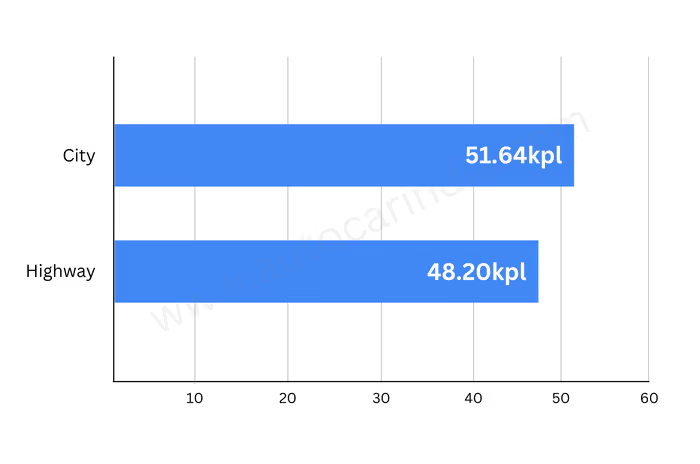Yamaha FZS Fi Hybrid fuel economy tested, explained
FZ-S Fi Hybrid is the latest variant and features a mild-hybrid system.
Published On May 24, 2025 07:00:00 AM
56,318 Views
Follow us onYamaha’s FZ range has long been a staple in the 150cc commuter space, and the latest FZ-S Hybrid adds a touch of tech to that reputation. This mild-hybrid setup promises greater fuel efficiency and improved city manners, and we’ve now put those claims to the test using our standardised fuel efficiency testing procedure.
Yamaha FZ-S Fi Hybrid real world fuel efficiency
We saw a respectable fuel efficiency figure of 51.64kpl in the city and 48.20kpl on the highway.
To measure the city fuel efficiency, we took the FZ-S Hybrid through our usual slow-speed, stop-and-go city test cycle. After riding 43.9km, we topped up the tank and it took 0.85 litres of fuel to brim it, resulting in a city fuel efficiency figure of 51.64kpl. We then tested the bike’s highway efficiency by cruising at a steady speed in top gear, simulating typical intercity conditions. Once again, we fuelled up to the brim before setting off, and after covering 42.9km, we refuelled 0.89 litres of petrol. This gave us a highway fuel efficiency figure of 48.20kpl.
Yamaha FZ-S Fi Hybrid fuel economy analysis
It is equipped with a 149cc motor that produces 12.4hp and 13.3Nm.
These figures are commendable, especially considering the bike’s use of the Smart Motor Generator system, which primarily supports start-stop functionality in traffic. The system works seamlessly in the background, without impacting the riding experience in any intrusive way. The silent start feature works well and will cut off the engine each time you’re at a standstill and in neutral.

The start-stop system alone saves a considerable amount of fuel in our bumper-to-bumper stop-and-go traffic. With a 13-litre fuel tank, the FZ-S Hybrid should offer a high triple-digit range under city riding conditions, which should make it quite an efficient petrol-powered motorcycle.
Autocar India’s fuel-efficiency testing
Our fuel-efficiency testing routine starts by first brimming the tank and ensuring the bike is running the manufacturer’s recommended tyre pressures. The bike is then ridden on fixed city and highway routes, where we maintain average speeds that best mimic real world scenarios, as well as keeping speed limits in mind. The payload on the bikes is kept constant by balancing rider weights and ballast, ensuring consistency across different vehicles and riders. At the end of the test cycle, the fuel tank is once again filled to the brim, giving us an accurate figure of how much fuel has been consumed against the trip meter reading.
Also see: KTM 390 Enduro R fuel economy tested, explained
Copyright (c) Autocar India. All rights reserved.

.jpg?w=700&c=1)


















Comments
Member Login
Personal Details
No comments yet. Be the first to comment.